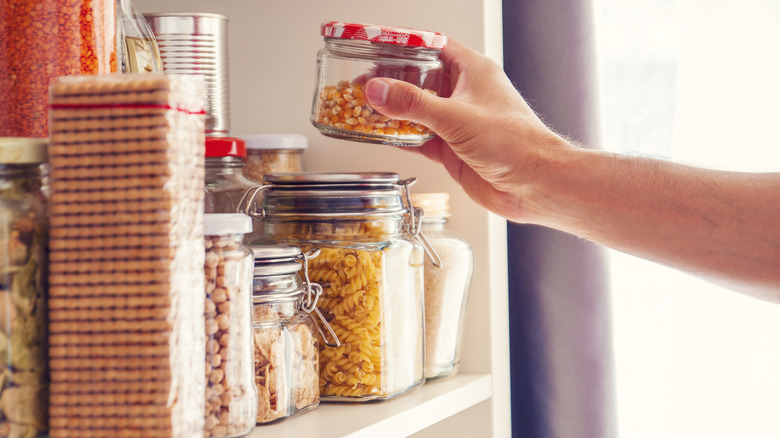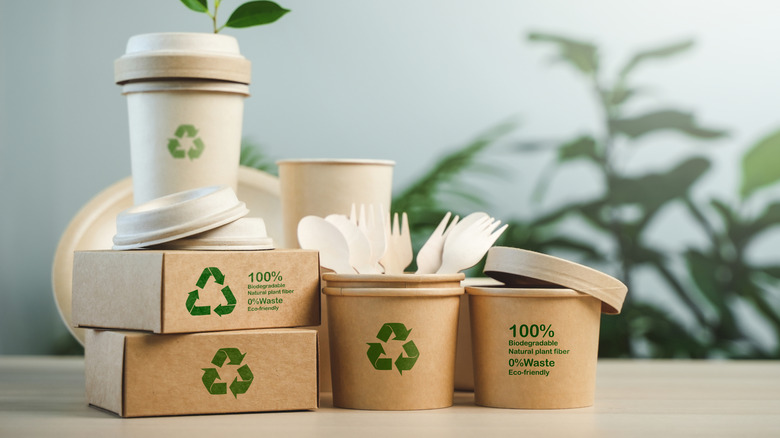How To Make Your Food Storage More Sustainable
In today's world, we're often faced with moral quandaries and dilemmas about sustainability. From the recyclable but still questionable plastic takeout containers (can they ever be sustainable?) to the popular mason jars that you may not be storing correctly, people across the globe are finding new ways to make their personal food storage methods more sustainable. If food storage sustainability is a point of concern for you too, then rest assured there are several different storage options that will help you leave the days of plastic storage tubs behind you.
First up, good old glass. This material is reusable, durable, washable, recyclable, and easy to both clean and transport. Because of this, it forms the basis of most peoples' sustainable storage vessel collections. It's best to use glass jars with airtight lids to store dry goods (like grains, beans and sugar) in your pantry. Not only will these jars keep your food fresh for a long time, but you can easily see what's inside each container. (This might actually help reduce food waste; if you can easily see how much of each food or ingredient you have, you know whether you need to buy more or not.)
Stock up on biodegradable containers
While it's great to have a few glass containers around, don't overlook biodegradable containers. Materials like starch and gelatin blend films, rice husks, and other plant-based materials have taken center stage as they are light and easy to transport, keeping your food safe and fresh when you are on the go. Unlike plastic, these organic and biodegradable materials break down, greatly reducing their environmental impact. Though they'll wear down faster than glass containers, these biodegradable materials are cheaper and much easier for people to carry, making them a firm favorite of restaurants, cafés, and other food businesses.
For another biodegradable, natural option, you can also opt to store leftover food in banana leaves. Just wash the leaves, fold them together, and place them in a container that still allows for some airflow like a bowl, for example. You can stash the leaves in the freezer until you need to use them and can simply compost the leaves when you're finished with them.
We understand that sustainability can feel overwhelming. Ultimately, as long as you avoid BPA and single-use plastics, and don't make these 14 food storage mistakes, you're already doing a good deal to help save our planet. Just remember, even in the face of huge challenges: Every little step in the right direction counts for something.

